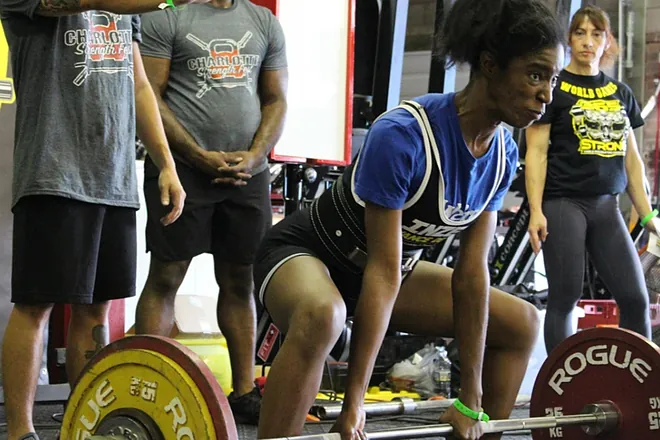- After 40, joint protection becomes a core training priority.
- Focus on low-impact cardio, muscle strengthening, and mobility practices.
- Always warm up, cool down, and progress gradually.
- Support training with lifestyle habits—nutrition, hydration, sleep, and stress management.
- With the right approach, you can stay strong, mobile, and pain-free well into later decades.

Turning 40 often sparks a shift in how people approach health and fitness. For some, it’s a reminder that the body doesn’t bounce back from hard workouts the way it used to. For others, it’s the moment joint pain, stiffness, or lingering injuries first start showing up.
The truth is, training after 40 isn’t about slowing down—it’s about training smarter. With the right approach, you can continue to build strength, improve endurance, and maintain mobility without putting your joints at risk.
This guide breaks down the best joint-friendly training strategies, why your fitness priorities need to shift after 40, and how to design a plan that keeps you strong, flexible, and injury-resistant for decades ahead.
Why Your Training Needs to Change After 40
By the time you hit your 40s, your body goes through subtle but important changes that affect exercise:
- Cartilage recovery slows – The cushioning around your joints doesn’t regenerate as quickly, making repetitive impact more damaging.
- Collagen production declines – Tendons and ligaments lose elasticity, meaning less shock absorption.
- Muscle mass naturally decreases – You can lose up to 8% of lean muscle mass per decade after 30 if you don’t actively maintain it.
- Bone density drops – Especially in women after menopause, which raises the risk of fractures.
Dr. Jordan Metzl, sports medicine physician at the Hospital for Special Surgery in New York, explains: “The biggest mistake I see people make after 40 is training exactly like they did at 25. Your joints can’t buffer the same pounding, but they’ll thrive if you train with intelligence.”
The Role of Low-Impact Cardio
Cardio remains essential after 40 for heart health, lung capacity, and metabolism—but the type of cardio matters. High-impact activities like long-distance running, jump-based HIIT, or playing basketball several times a week can accelerate wear and tear on knees, hips, and ankles.
Instead, emphasize low-impact endurance training:
- Walking – A daily brisk walk strengthens bones and improves circulation without pounding the joints. Try to hit 7,000–10,000 steps.
- Cycling – Builds leg strength, particularly in the quads and glutes, which help stabilize the knees. Both outdoor and stationary cycling are joint-friendly.
- Swimming – A full-body, non-impact workout that builds cardiovascular endurance while supporting the joints. Especially beneficial if you already have arthritis or back pain.
- Rowing – Strengthens the posterior chain (back, glutes, hamstrings) while delivering cardio benefits with minimal impact.
💡 Example: If you used to run five days a week, switch to two runs and three days of cycling or swimming to reduce cumulative joint stress while still keeping endurance high.
Why Muscle Strengthening Protects Joints
Strong muscles act like shock absorbers, taking pressure off joints by improving stability. Without adequate muscle support, the burden falls on tendons and ligaments—structures that don’t regenerate quickly.
Best Approaches for Joint-Friendly Strength Training
- Resistance Bands – Gentle on joints while still providing excellent tension through the full range of motion.
- Free Weights (Dumbbells & Kettlebells) – Allow natural movement patterns, unlike some machines that lock joints into unnatural paths.
- Bodyweight Training – Push-ups, squats, planks, and glute bridges remain highly effective and low-risk.
- Isometric Holds – Planks, wall sits, and isometric lunges engage stabilizing muscles without dynamic stress on the joints.
Functional training is particularly valuable here—these are exercises that mirror everyday movements. Squats mimic sitting and standing. Deadlifts mimic picking things up. Carrying weights simulates hauling groceries. Training your body for real life means your joints are more resilient to daily stress.
Don’t Overlook Mobility and Flexibility
As you age, mobility becomes as important as strength. Limited joint mobility leads to compensations that strain other body parts. Think tight hips leading to back pain, or stiff ankles increasing knee stress.
Best Mobility & Flexibility Practices
- Yoga – Builds balance, stabilizes joints, and stretches tight muscles. Research shows it can reduce stiffness and improve functional mobility in older adults.
- Pilates – Strengthens deep core and stabilizer muscles, improving posture and spinal alignment.
- Daily Mobility Routines – Hip openers, ankle rotations, shoulder dislocates with bands, and cat-cow stretches can all keep joints lubricated and free-moving.
💡 Pro tip: Just 10 minutes of mobility drills before bed can dramatically improve how your joints feel in the morning.
The Power of a Proper Warm-Up and Cool-Down
Skipping warm-ups becomes costly after 40. Cold joints and tight muscles are more injury-prone, and recovery takes longer.
How to Warm Up Properly
- 5 minutes of light cardio (walking, cycling, or elliptical).
- Dynamic stretches like leg swings, arm circles, and torso twists.
- Controlled joint rotations (ankle circles, hip circles, shoulder rolls) to stimulate synovial fluid—the natural lubrication for your joints.
How to Cool Down
- Static stretches held 20–30 seconds for major muscle groups.
- Gentle mobility work to restore full range of motion.
- Foam rolling or massage to improve circulation and reduce stiffness.
Sports physiotherapist Karen Litzy notes: “Warm-up and recovery aren’t optional after 40. They’re the insurance policy that lets you keep training consistently.”
Lifestyle Factors That Support Joint Health
Training is only part of the equation. Daily lifestyle habits play just as big a role in how your joints feel:
- Nutrition: Adequate protein (1.2–1.6g per kg of bodyweight), omega-3 fatty acids (from fish, chia, flax), and micronutrients like vitamin D and calcium help maintain muscles and bones.
- Hydration: Water keeps cartilage lubricated. Even mild dehydration can increase joint stiffness.
- Weight Management: Every extra pound adds 4 pounds of pressure on your knees. Even a small reduction in body fat lightens the load significantly.
- Sleep: Recovery hormones like growth hormone and testosterone are released during deep sleep, directly supporting tissue repair.
Common Mistakes to Avoid After 40
Many injuries and setbacks come not from aging itself but from training missteps:
- Jumping into workouts without a proper warm-up.
- Copying 20-year-old fitness influencers instead of adapting routines.
- Ignoring small aches that later develop into chronic injuries.
- Pushing through pain instead of adjusting exercises.
- Skipping strength training and only doing cardio.
A Sample 7-Day Joint-Friendly Training Plan
Here’s a balanced weekly framework you can adapt:
- Day 1: Strength training (dumbbells + resistance bands, 40 min)
- Day 2: Swimming or cycling (30–45 min, moderate pace)
- Day 3: Yoga or mobility flow (20–30 min)
- Day 4: Functional strength (bodyweight + kettlebells, 40 min)
- Day 5: Brisk walk or elliptical (45 min)
- Day 6: Pilates or core stability (30 min)
- Day 7: Active recovery (light stretching, foam rolling, leisurely walk)
This mix ensures strength, cardio, mobility, and recovery are all covered without overloading any single system.
The message isn’t to train less after 40—it’s to train smarter. By swapping high-impact pounding for joint-friendly movements, emphasizing strength and flexibility, and doubling down on warm-up and recovery, you not only protect your joints but set yourself up for decades of active, pain-free living.
Your 40s don’t have to be the beginning of decline—they can be the decade where you build the foundation for the healthiest, strongest version of yourself.






